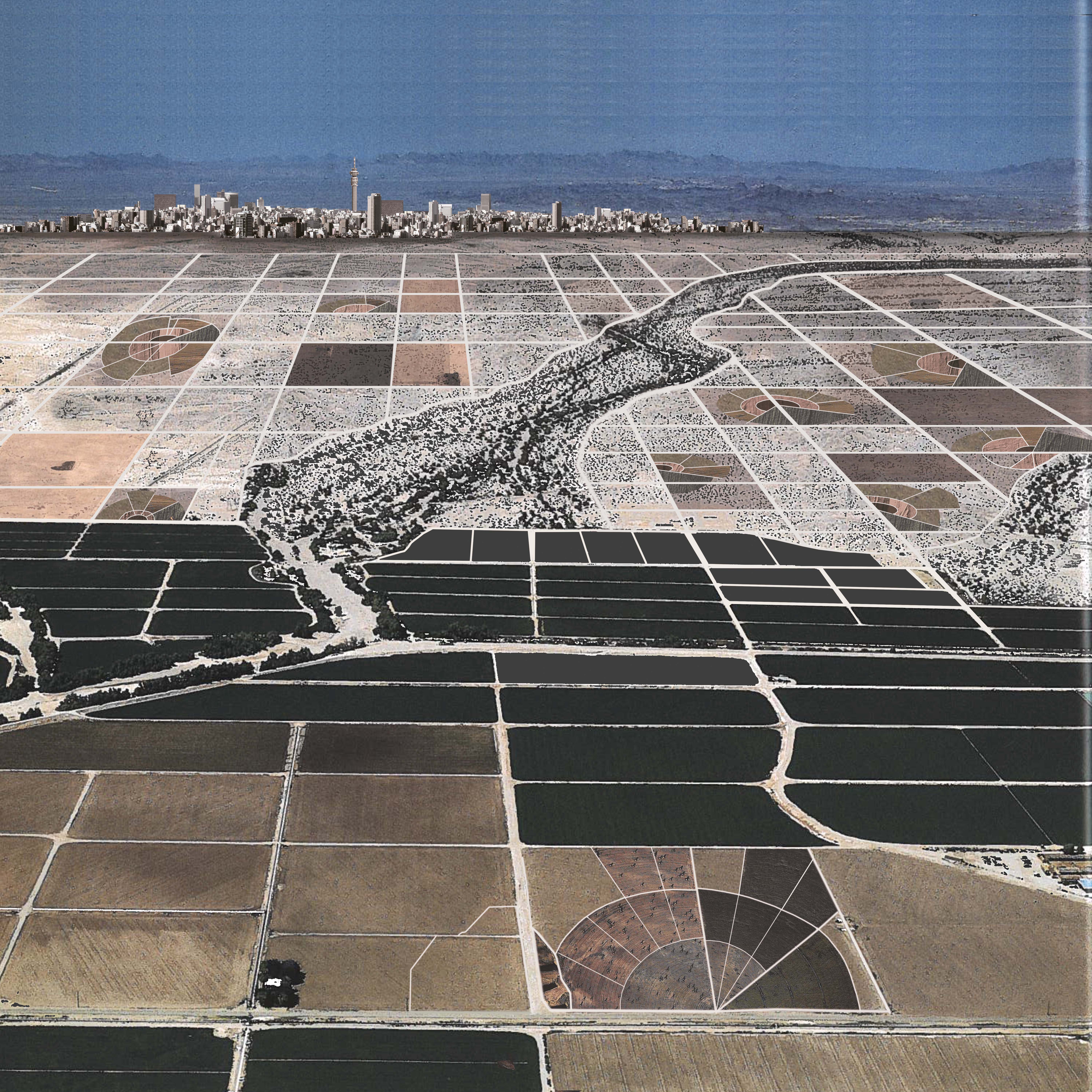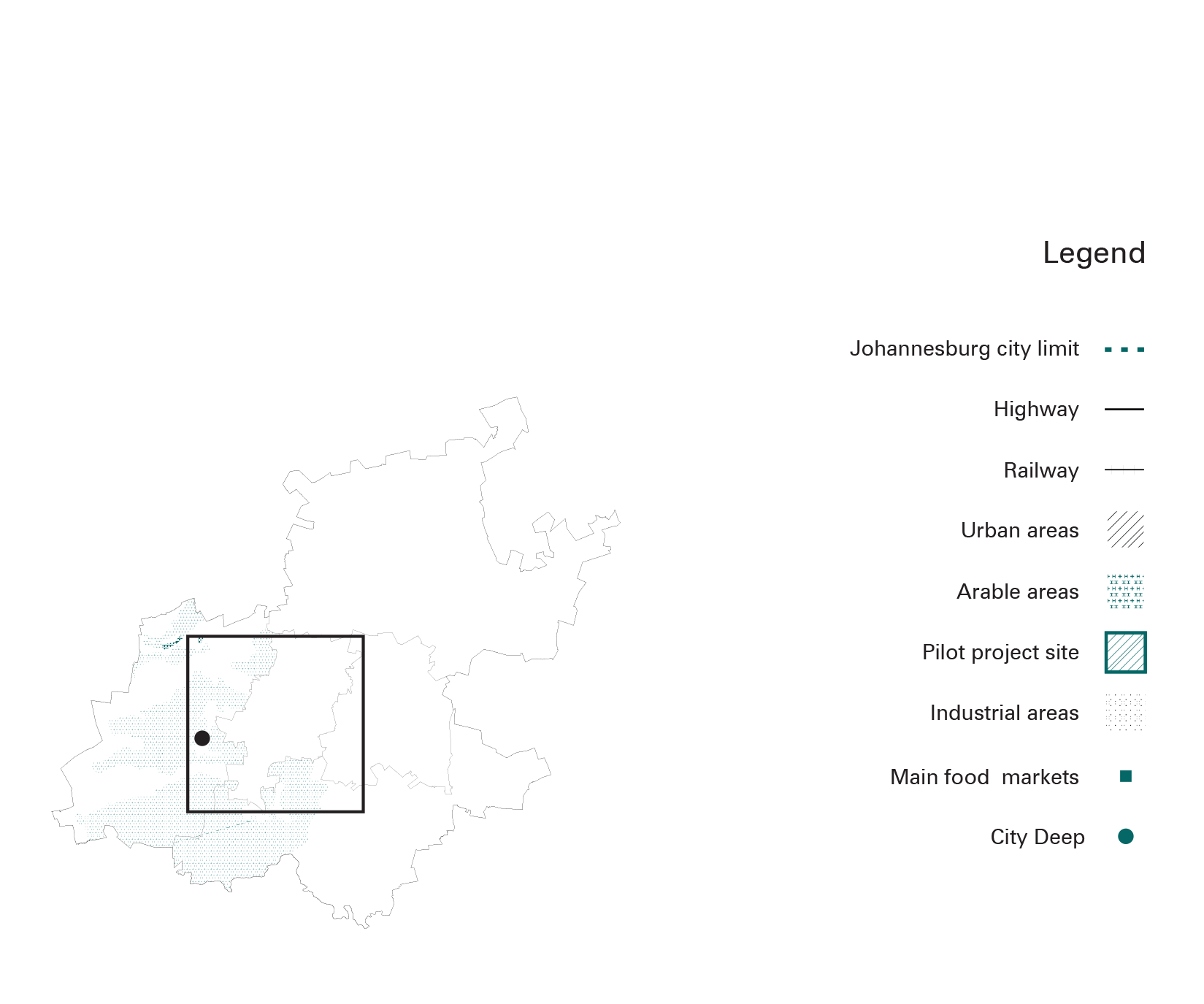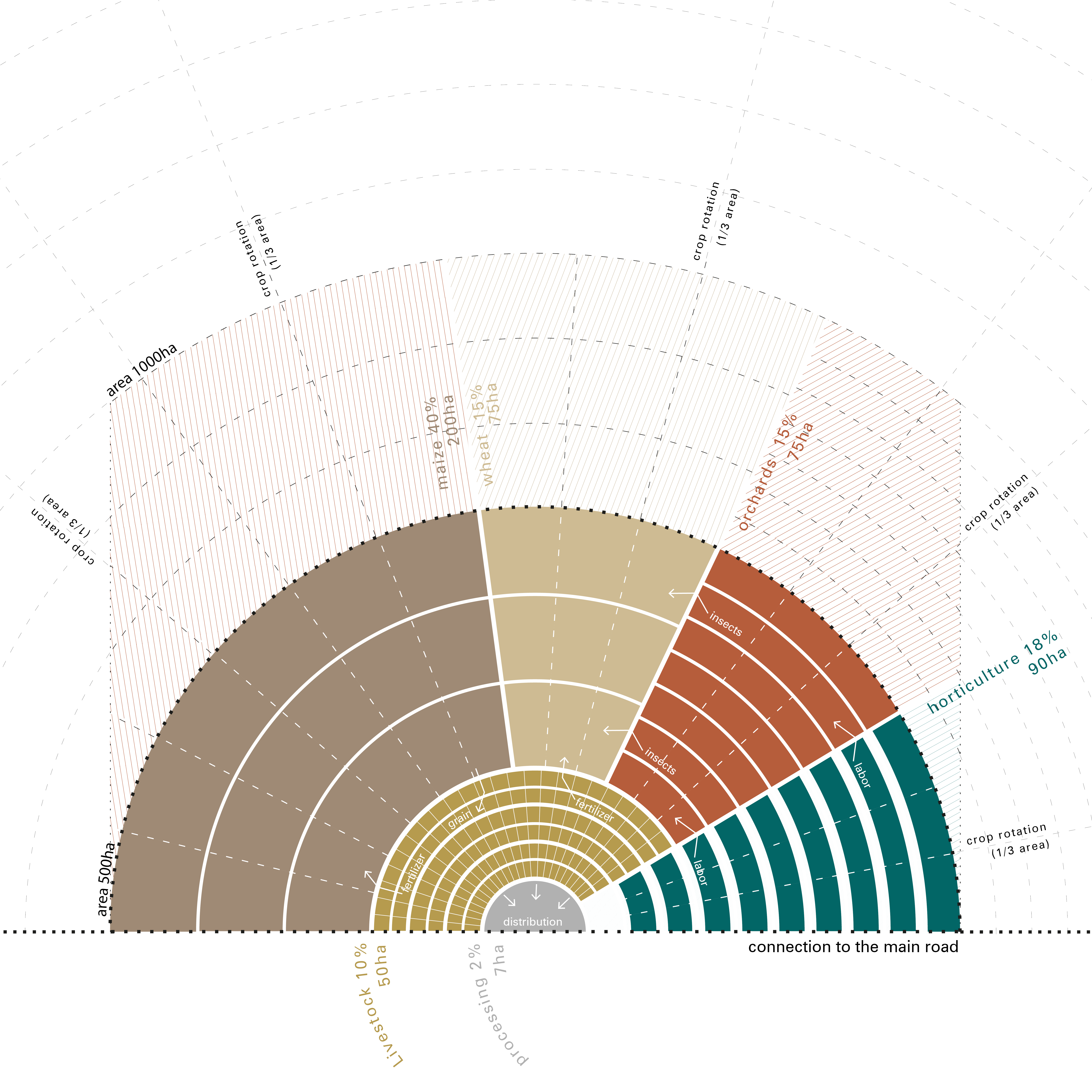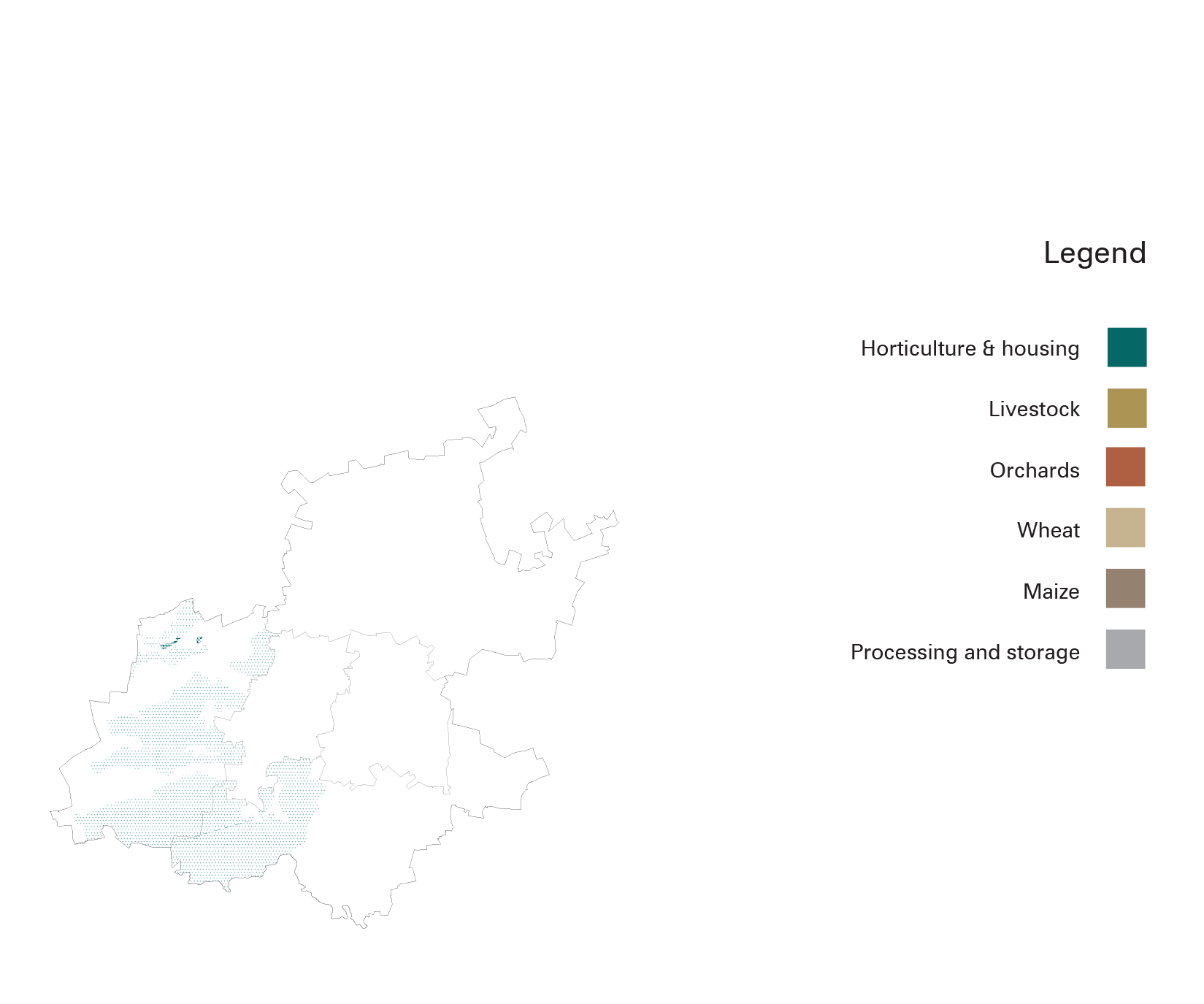Growing roots

Growing roots, an agricultural community deals with the Subdivision of Agricultural Land, which South African policies have prevented pleading the creation of ‘’uneconomic’’ subdivision of prime agricultural land, resulting in the implicit inaccessibility of some minorities to arable plots.
This speculative project is a mix-used farm that combines different farming activities with housing promoting a sustainable and circular system, a regenerative space of symbiosis where all organisms benefit from each other. The strategy will benefit citizens on a national scale, helping to achieve food security, social cohesion, and urban resilience without overexploiting the soil and destroying biodiversity. This pilot model might repeat in the Johannesburg peri-urban area creating agricultural districts and transforming South Africa's conventional farming practices, segregated into highly specialized commercial farms and small subsistence smallholder farmers.

Agricultural Districts
Johannesburg Peri-urban Area
Growing Roots, an agricultural community, deals with the Subdivision of Agricultural Land, which different South African policies have prevented. The governments of the Apartheid era used policies to provide benefits for the white minority resulting in a segregated agricultural landholding. The Subdivision of Agricultural Land Act 70 of 1970 (“SALA”) prevented the creation of ‘’uneconomic’’ subdivision of prime agricultural land, in the national interest. At the present time, the Subdivision of Agricultural Land Repeal Act of 1998 is still in operation, which pretended to remediate the former legislations’ inequalities but without major changes into effect.
This project speculates on the formation of agricultural districts in the peri-urban Johannesburg area to face the rapid urbanization and unsustainable land management practices in favor of a resilient city.


Land Use Dynamics
Johannesburg Peri-urban Area
The National Development Plan of 2030 contemplates a land reform, subdividing any agricultural land bigger than 1000ha to benefit the minorities without access to arable land. Also, according to the current market strategies, 500ha is an adequate size for commercial medium-tech farming.
The project focuses on 500ha to 1000ha plots to develop progressively sustainable agricultural communities without diving into the land, which not only will provide future users with arable land but also formal housing on the property and a source of income. This strategy will benefit citizens on a national scale, helping to achieve food security, social cohesion, and urban resilience.
The speculative farm layout works as a chart; starting with a nexus that centralizes all the processing and production amenities. From the workforce, the crops expand in the opposite direction according to the required labor.




